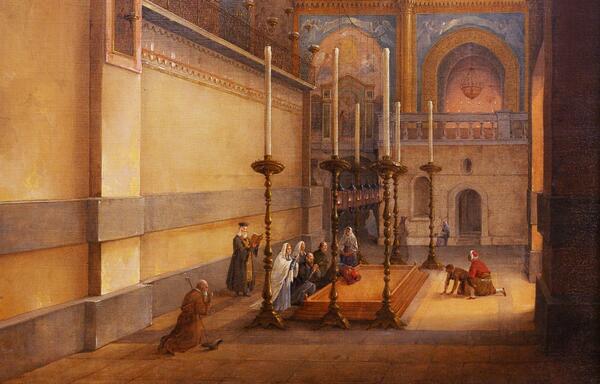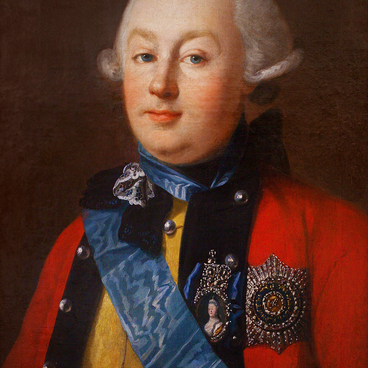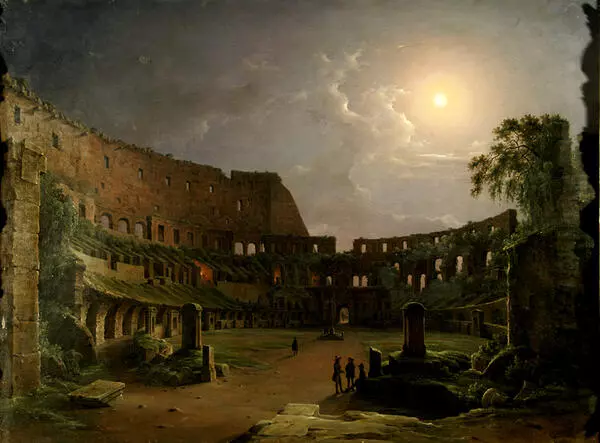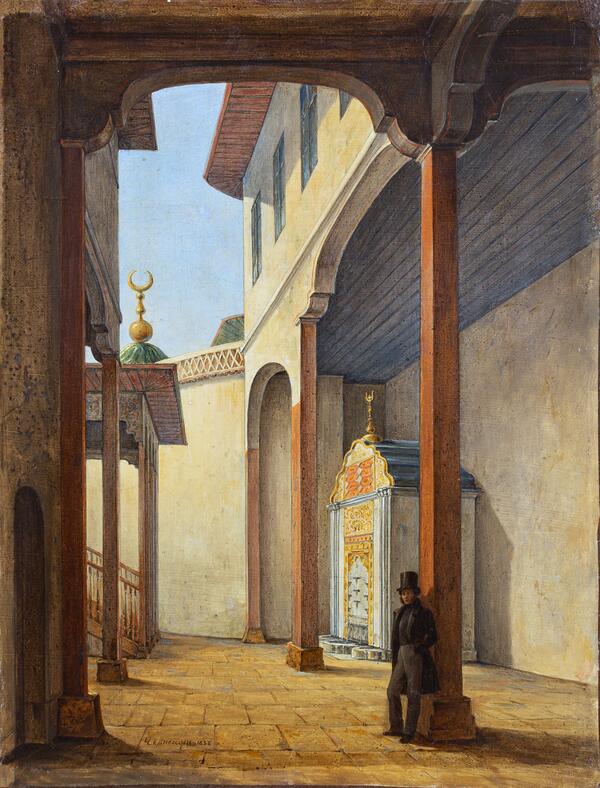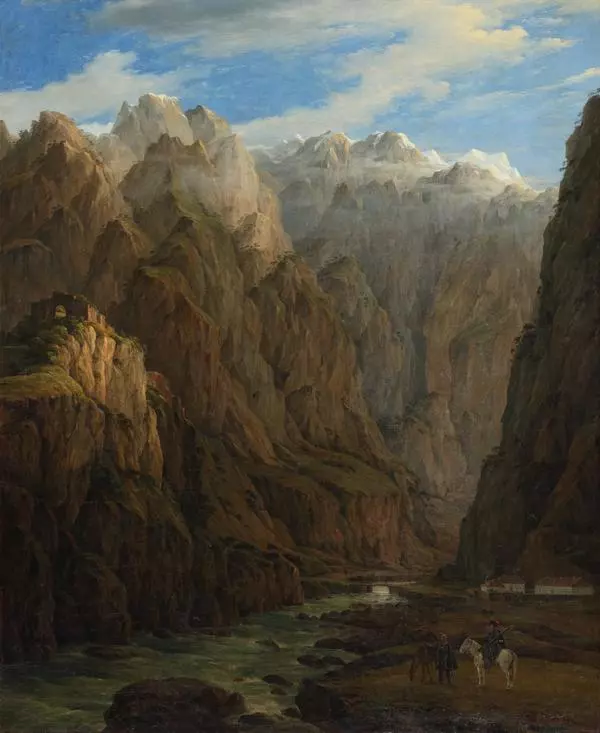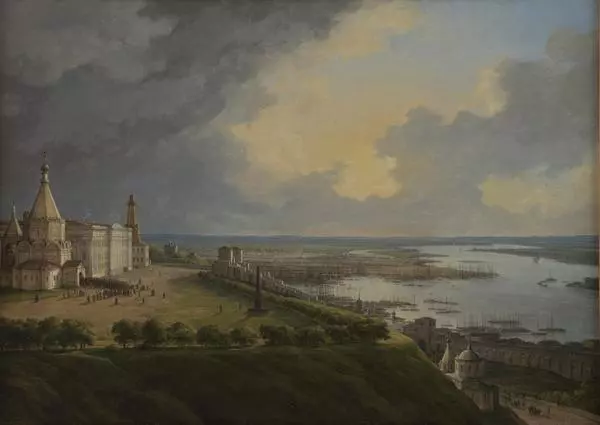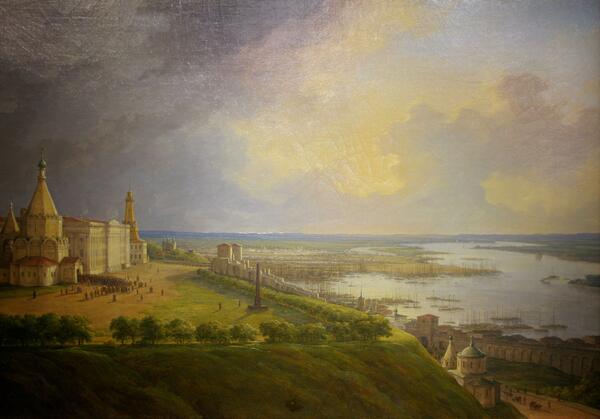An academician of landscape painting, Nikanor Chernetsov was born in a poor family in the city of Lukh, Kostroma Governorate. He had many brothers and sisters. Like his older brother Grigory, he received his initial education in an icon painting workshop. Subsequently, they both graduated from the Imperial Academy of Arts with gold medals.
In 1838, the brothers embarked on a six-month expedition along the Volga on a barge which was specially equipped as a workshop. They created a unique 746-meter hand-drawn panorama of the banks of the Volga River from Rybinsk almost to Astrakhan. The Chernetsovs presented the panorama to Nicholas I, and the emperor donated it to the Hermitage. Presently, it is displayed in the Russian National Library in St. Petersburg.
In 1840–1843, the brothers visited Italy, Greece, and the Middle East. After the trip, they released an album of lithographs “Palestine. Views drawn from nature by Academicians G. and N. Chernetsov, in 1842 and 1843”. Their views of Egypt, Syria, and Lebanon became a sensation at art exhibitions in St. Petersburg. “This journey”, reported the magazine 'Otechestvennye Zapiski' (Patriotic Notes), “enriched the treasury of Russian artworks with new gifts introduced by these talented artists… The East, with its wondrous nature, with its sacred memories, has brought a bountiful harvest to the Russian artists”.
Many lithographs and paintings of that time were based on the sketches made by the brothers on location — including the works housed in the museum. Contemporary researchers note that the Chernetsovs “in a way created an iconography of Jerusalem, which can be recognized as an artistic encyclopedia of the Holy Land”.
In the painting, Nikanor Chernetsov captured the interior of the Church of the Holy Sepulcher with the Stone of Anointing — the greatest Christian shrine. According to the Sacred tradition, the Christ’s body was laid on the stone after being removed from the cross.
The artist conveyed a restrained solemn atmosphere by skillfully choosing the point of view, contrasting illuminated areas and shadows, and by painting details with graphic accuracy. Scrupulous portrayal of the smallest details creates, as the brothers wrote, “a true and accurate understanding of the relics that are located in the Holy Land and are precious to every Christian”.
The Chapel of the Tomb of Jesus
Creation period
after 1843
Dimensions
91x73 cm
Technique
oil, canvas
Collection
Exhibition
6
Open in app#1
Nikanor Chernetsov
The Chapel of the Tomb of Jesus
#2
#3
Ministry of Culture of the Russian Federation
read morehide
00:00
00:00
1x
The Chapel of the Tomb of Jesus
Creation period
after 1843
Dimensions
91x73 cm
Technique
oil, canvas
Collection
Exhibition
6
Open in app
Share

